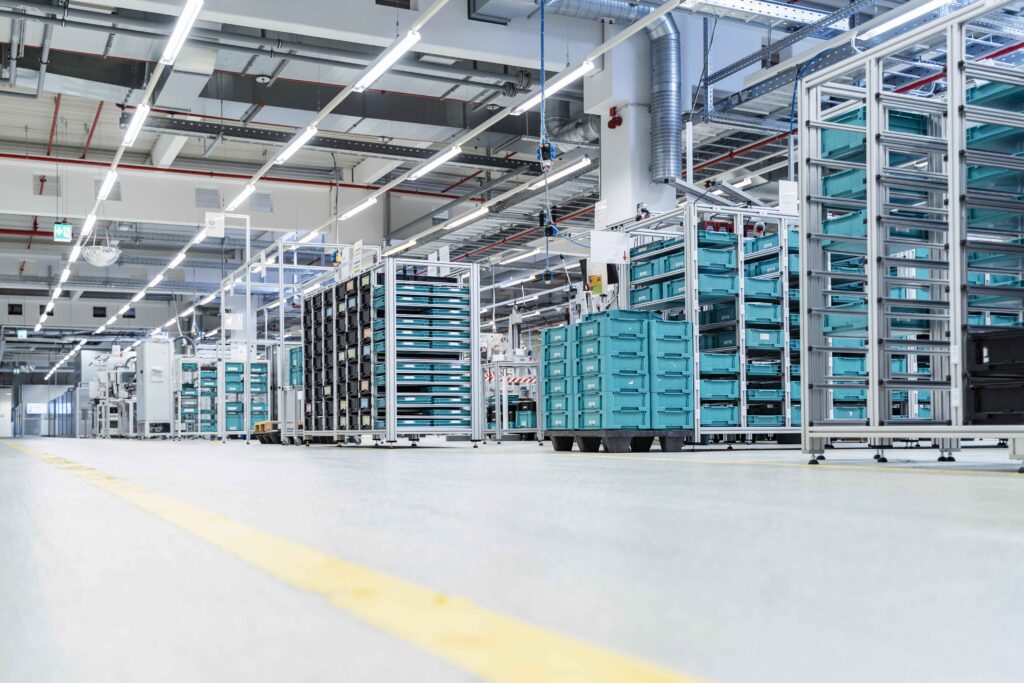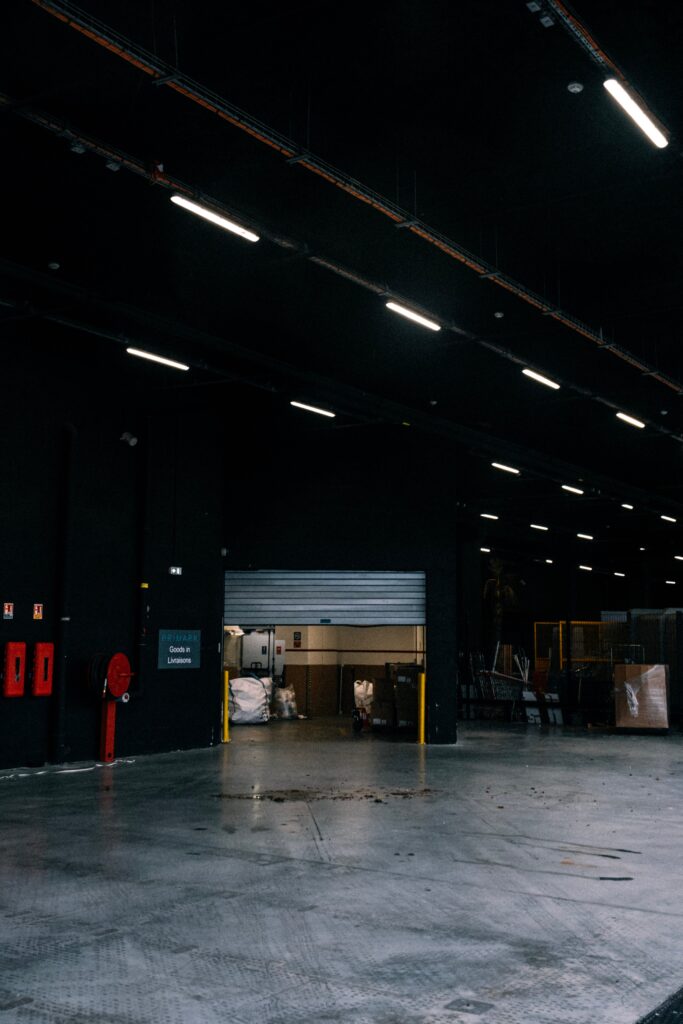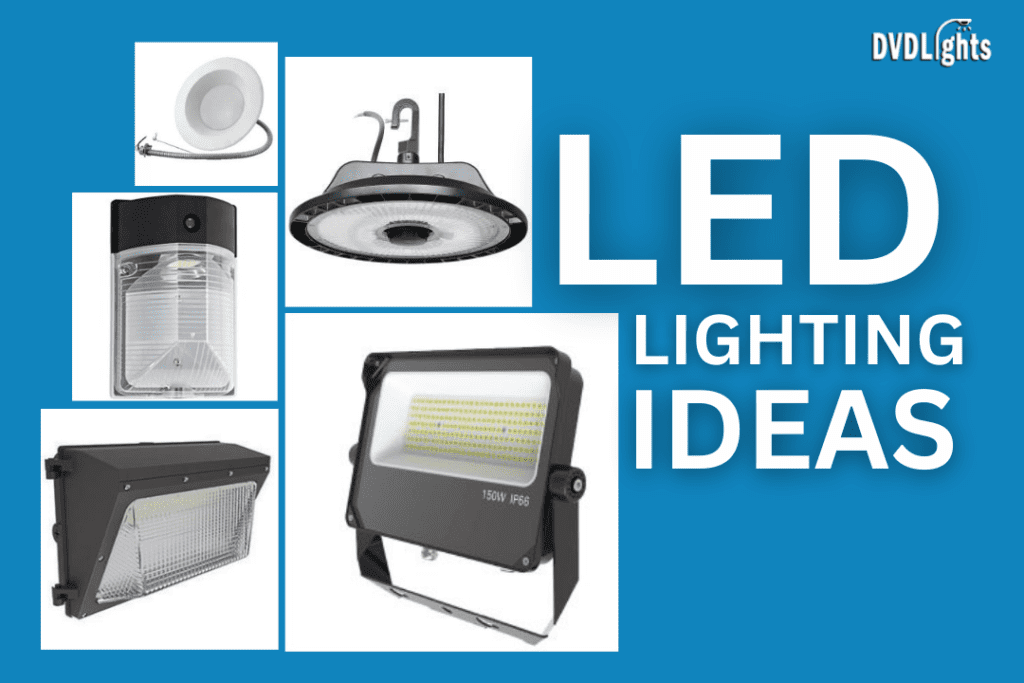Introduction
Effective factory lighting is more than just flipping a switch; it’s a crucial element in optimizing productivity, safety, and energy efficiency in industrial environments. Imagine a busy factory floor illuminated by high-output lighting for factories like LED Linear High Bays, which provide clear, uniform brightness across large spaces. This guide covers essential tips for effective industrial lighting solutions tailored to LED factory lighting needs for technicians, contractors, retailers, and distributors.
Importance of Optimal Factory Lighting
In fast-paced environments like factories, lighting impacts productivity, mood, and safety. Good factory lighting fixtures are essential for reducing strain, keeping workers alert, and minimizing the risk of mistakes or accidents. Bright lighting for manufacturing facilities isn’t just about brightness but achieving the right balance between illumination, energy efficiency, and strategic lighting placement.
Choosing the Right LED Lights for Industrial Use
Not all LED lights are suitable for factories. Industrial-grade lighting for factories should offer durability, energy efficiency, and longevity. Products like LED Linear High Bays are highly effective for large spaces, offering bright, even light coverage. For an added level of convenience and energy savings, LED Linear High Bays with motion sensors provide illumination only when needed, automatically turning off in unoccupied areas. This combination ensures that lighting meets the factory’s needs without wasting energy.
Balancing Brightness and Glare Control
Brightness is essential, but excessive brightness can cause glare, a distraction, and even a safety risk. Smart lighting for factories helps balance these aspects by using anti-glare factory lighting fixtures and diffusers that ensure an even, comfortable spread of light. For effective glare control, positioning high-output lighting for factories at angles that avoid direct exposure to the eyes is crucial.
Energy Efficiency and Cost-Effectiveness
Since factory lighting often runs for extended hours, energy-efficient factory lights are a must for cost savings. LEDs, especially options like LED Linear High Bays motion sensor, are popular for their low energy consumption, as they automatically reduce energy use when not needed. Adding smart sensors and dimmers to factory lighting installation projects also makes the space more responsive to actual usage, reducing costs further.
Enhancing Safety with Strategic Lighting Placement
Strategically placing warehouse and factory lighting can enhance safety, especially in high-traffic areas. Ensuring that factory lighting installation covers critical spaces like walkways, stairways, and machinery areas reduces the risk of accidents. Heavy-duty lighting for factories ensures that critical areas remain brightly illuminated, allowing for safe navigation and efficient workflow.
Tips for Reducing Shadows in Factory Spaces
Shadows can reduce visibility, potentially hiding obstacles or machinery hazards. To combat this, layering industrial workspace lighting with overhead lights, task lights, and accent lights can achieve even coverage and minimize shadows. By placing bright lighting for manufacturing facilities at varied heights and angles, shadows are reduced, creating a safe, well-lit environment.
Incorporating Task Lighting for Specific Areas
While general lighting illuminates large areas, task lighting enhances precision in specific zones, such as quality control or assembly lines. Factory lighting design that incorporates task lights with adjustable arms allows workers to position light exactly where it’s needed, improving accuracy and efficiency.
The Role of Natural Light in Factory Productivity
Natural light offers energy savings and a morale boost. Factory lighting design that maximizes natural light by including skylights or windows not only cuts down on artificial light needs during the day but also enhances productivity by boosting worker mood. Reflective surfaces can help distribute natural light across work areas.
Regular Lighting Maintenance Practices
Factory lighting maintenance is critical to avoid outages and maintain productivity. Routine tasks such as cleaning fixtures, replacing outdated bulbs, and checking wiring ensure that industrial lighting solutions perform at their best. Regular factory lighting maintenance is a cost-saving measure, ensuring reliability and consistent brightness.
Adapting Lighting for Shift Work
For factories operating round the clock, lighting adaptability is essential. Smart lighting for factories can simulate natural lighting during night shifts, aiding workers’ circadian rhythms. Adjusting color temperatures with factory lighting controls allows management to provide bright, clear lighting when needed, enhancing focus and reducing fatigue.
Smart Lighting Controls and Automation
Smart lighting controls and automation can optimize factory lighting based on occupancy, daylight levels, or pre-set schedules. Products like LED Linear High Bays motion sensor offer intelligent lighting options that reduce wasted energy. By embracing factory lighting controls, you’re not only enhancing efficiency but also saving energy.
Tips on Retrofitting LED Lights in Older Factories
Switching to LEDs is easier with LED retrofit for factory lights. Retrofitting older lights with LEDs may seem complex, but affordable factory lighting options and retrofitting kits can make the transition smoother. Updating outdated systems with industrial-grade lighting for factories can reduce operational costs while offering superior lighting quality.
Compliance with Lighting Standards and Regulations
Ensuring that factory lighting meets local and industry standards is key to maintaining a safe environment. Familiarize yourself with OSHA and ANSI lighting requirements to keep your factory compliant. Complying with these standards not only avoids penalties but promotes worker safety and well-being by following essential factory lighting installation guidelines.
Conclusion and Key Takeaways
Optimizing factory lighting with the right industrial lighting solutions is an investment in productivity, safety, and cost savings. By selecting appropriate energy-efficient factory lights, balancing brightness, and incorporating smart controls like LED Linear High Bays with motion sensors, you can create a well-lit, productive environment that supports worker efficiency and the bottom line.
Frequently Asked Questions
How do I reduce glare from factory lighting?
To reduce glare, consider using anti-glare LED fixtures and diffusers and position lights at angles that prevent direct glare at eye level.
What’s the ideal color temperature for factory lighting?
Cool white lighting between 4000-5000K works best for factories, providing bright, clear illumination without causing eye strain.
How often should factory lighting be maintained?
Regular factory lighting maintenance every few months is ideal for cleaning fixtures, replacing bulbs, and inspecting wiring to prevent issues.
Can natural light replace artificial lighting in factories?
Natural light can supplement factory lighting, reducing energy costs during daylight hours, but reliable LED factory lighting is essential for consistent illumination.
What’s the benefit of retrofitting LED lights in an old factory?
LED retrofitting for factory lights reduces energy costs and improves lighting quality, and retrofit kits make the transition to LED lighting smooth and cost-effective.
By following these guidelines, you’ll set a bright path toward implementing affordable factory lighting that’s efficient, productive, and safe for workers and profitable for the factory.





